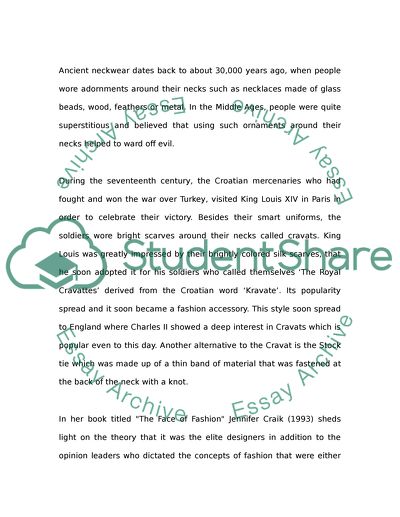Cite this document
(“History of Ties: How did ties become an essential element of modern Research Paper”, n.d.)
Retrieved from https://studentshare.org/family-consumer-science/1409919-history-of-ties-how-did-ties-become-an-essential
Retrieved from https://studentshare.org/family-consumer-science/1409919-history-of-ties-how-did-ties-become-an-essential
(History of Ties: How Did Ties Become an Essential Element of Modern Research Paper)
https://studentshare.org/family-consumer-science/1409919-history-of-ties-how-did-ties-become-an-essential.
https://studentshare.org/family-consumer-science/1409919-history-of-ties-how-did-ties-become-an-essential.
“History of Ties: How Did Ties Become an Essential Element of Modern Research Paper”, n.d. https://studentshare.org/family-consumer-science/1409919-history-of-ties-how-did-ties-become-an-essential.


